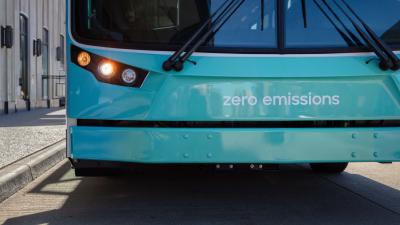What to do with regenerative energy at 100% battery state of charge
What is regenerative energy?
Regenerative energy is energy returned from a vehicle's electric motor when it is decelerated. Instead of using the motor to drive the vehicle forward, it is used as a generator to slow the vehicle down. The motor uses energy from the battery to drive, but then pushes energy back to the battery to charge it when it acts as a generator when regeneratively braking.
As the battery approaches 100% state-of-charge (SOC), the amount of energy it can accept begins to decrease, and eventually it can no longer accept any more (fully charged). If you continue to push energy back into the battery once it has reached 100% SOC, you can damage the battery and create a safety risk.
Potential solutions
Use of an additional retarder
One option is to add a hydraulic retarder, commonly used in conventional trucks. This device is installed on the drive shaft between the transmission and the road wheels. It contains vanes attached to the drive shaft, enclosed in a static chamber. When retardation is needed, a liquid (usually water or oil) is pumped into the chamber, creating viscous drag that slows the vanes and, consequently, the vehicle. However, this system adds extra weight and complexity, particularly in electric vehicles where a drive shaft may not be present.
Increasing battery capacity
Another solution is to increase the battery size to prolong the time during which regenerated energy can be absorbed. However, this approach adds weight, increasing the braking force required to maintain speed downhill. Additionally, it incurs extra costs with uncertain returns on investment, as this battery capacity would primarily be used for braking.
Smart telematics instead of engineering solutions
Smart telematics has also been proposed to extend the use of electric braking before the battery reaches full capacity. Modern telematics and route planning can inform drivers to minimize regenerative energy use and rely on mechanical brakes, allowing for better energy management. However, this approach diverges from the goal of preserving energy in all its forms for reuse.
A comprehensive solution
The initial concept behind the Integrated Brake Chopper and Resistor (iBCR) was developed by Accelera™ by Cummins to address a common customer concern: what to do with regenerative energy when the battery reaches 100% state of charge (SOC)?
The iBCR is designed to enhance the quantity of recuperative braking in commercial vehicles, providing greater independence from the vehicle’s batteries. By incorporating the iBCR into battery electric vehicles (BEVs), hybrid electric vehicles (HEVs), or fuel cell electric vehicles (FCEVs), manufacturers can achieve new levels of design flexibility and energy efficiency.
The iBCR significantly boosts overall system efficiency, offering substantial cost savings for commercial vehicles. It also helps original equipment manufacturers (OEMs) comply with regulations for heavy-duty vehicles by enabling the electric drive motor to function as an endurance braking device during energy recovery.
How does the iBCR work?
The brake chopper limits the DC bus voltage by diverting excess braking energy from the circuit. It acts as an electrical switch, activated when the DC bus voltage exceeds a specified threshold. The DC bus is the primary circuit connecting the traction battery, traction inverter, and auxiliary inverters.
When activated, the brake chopper redirects excess energy to a liquid-cooled resistor, dissipating the energy as heat.
Additional benefits of the iBCR
- Support for vehicle heating: The heat generated by the resistor can be utilized to support the vehicle’s heating system, allowing OEMs to eliminate traditional heaters and free up valuable space in the vehicle’s architecture.
- Relief for mechanical brakes: The load on conventional brakes can be reduced, and the retarder function can be simulated through a smart combination of electric motor controls and the iBCR.
Why trust this new technology?
The development of the iBCR builds on over 25 years of experience in designing traction systems for hybrid vehicles. Accelera’s long-term discussions with customers and expertise in brake chopper design have culminated in the creation of the first integrated brake chopper and resistor. The iBCR has already been tested by select customers and is commercially available. Visit the iBCR product page to download a spec sheet or contact Accelera for more information.

